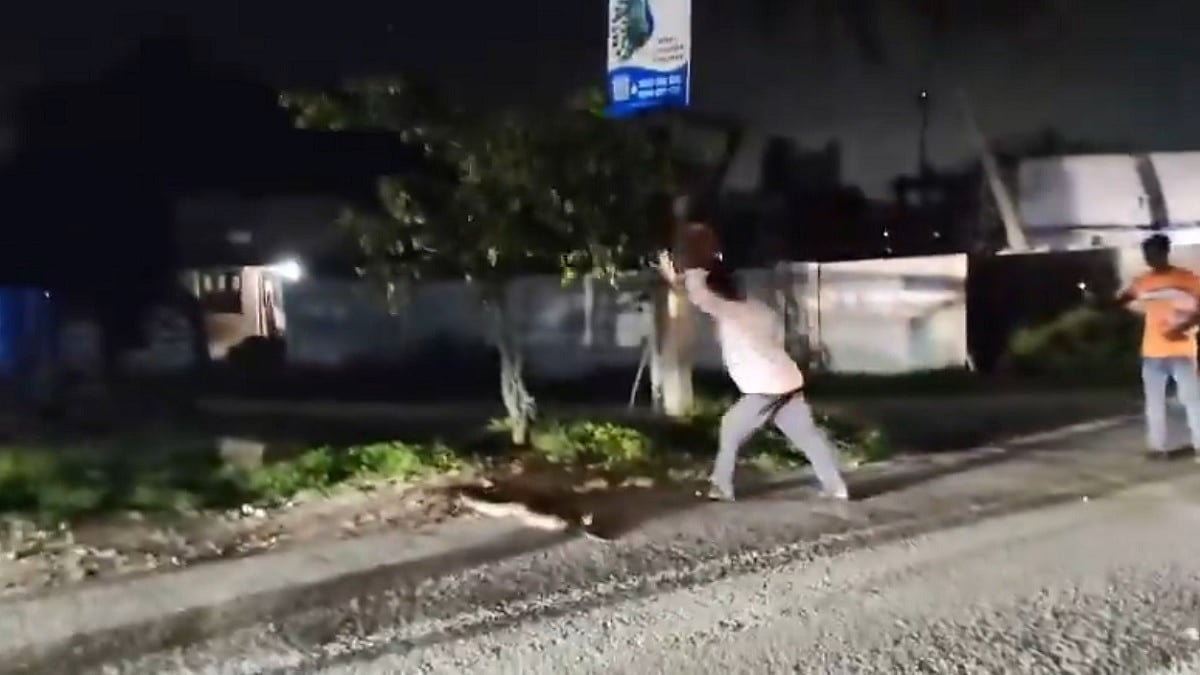The longest battle to save an urban forest is ongoing in Mumbai since the past five years. For a city known for its indifference towards nature, the chalta hai attitude, this comes as a surprise. Let us take a look at what this fight is all about.
Aarey Milk Colony, a dense jungle land in the 1950s was earmarked and allocated for dairy development activities. Patches of jungle were cleared to make room for cattle sheds and grasslands created to provide fodder grass for the 20,000 odd cattle that were kept there. The dairy business prospered and the milk bottling plant was a must see for school children of Mumbai who went there for picnics. It’s the only place in Mumbai which allows you to take your family to a forested area, sit under the trees and eat your own home made food. Families interacted and this was Mumbai’s family social space.
Time passed and by the 1990s people were drawn towards the mall and shopping culture. Shopping and mall cruising became the recreation activity. Aarey, with its rich biodiversity, began to fade from people’s minds The worsening traffic in the suburbs made reaching Aarey a nightmare. Neglect crept in and Aarey began to fall apart. The dairy was deliberately killed by successive governments over the last two decades. Politicians started milk cooperatives in rural Maharashtra and Mumbai forgot its own self sufficient milk production and supply source. Soon the land sharks and slum mafia moved in nibbling away at Aarey.
The Aarey forests and grasslands form the base or downhill portions of the Sanjay Gandhi National Park. Large patches of grazing lands coupled with natural forest trees made the park a complete ideal protected wildlife area. One contiguous forest parcel. Aarey with three small lakes and five lakh trees is the catchment to two rivers that flow through it and interact with its forests. Aarey was always seen as a wildlife area, one where animals frequently came searching for pastures and water.
Some compassion and sensitivity was shown by the Dairy Development board which was the caretaker of this huge parcel of land which once admeasured over 2000 ha. The roads inside Aarey used to be shut at night to allow movement of wildlife. Even as recently as 2014 the Public Works Department, when examining a proposal to widen the road passing through Aarey, opined that the road should be elevated throughout the Aarey stretch to conserve wildlife.
But that was not to be since the government on its part had already set in motion a masterplan to excise Aarey from the National Park. First Film City was brought in from one side and the ring closed from the other sides by allowing a township and IT park to come up. The result was that the cake was sliced out for every vested interest to feast. Aarey stood out isolated from the National Park and open to plunder. The government decided to usher in “Development”. A railway service centre and a railway station inside Aarey on the banks of the Mithi river. A railway station inside a forest for what? The reasons were soon revealed. A 90 acre slum rehabilitation scheme which will bring in 1.5 lakh slum dwellers into Aarey, followed by a 240 acre zoo, a Metro Bhavan masquerading as a “Metro control centre” but in reality a 30 storey commercial tower with offices for sale, cafeterias, conference rooms etc.
Citizens groups were up in arms fighting this blatant loot of public land. Protests followed. Over five long years the battle continues. With its 5 lakh trees, three lakes, two rivers, eight resident leopards, 76 bird species, 16 types of mammals, 80 butterfly species, 38 types of reptiles, endemic scorpions, 30 tribal hamlets with 8000 traditional forest dwellers, Aarey is screaming out for protection and recognition. The government, on its part, has taken absurdity to new heights. Lands infested with slums with not even a single tree or wildlife in it are being contested and claimed as forests in Mumbai! The job of doing what the government is duty bound to do, is sought to be done through the judiciary. In fact the state forest department, in its proposals to demarcate the Ecologically Sensitive Zones of the SGNP, have written that forests in India and the state have been saved due to judicial activism!
The Metro Shed project site was taken by MMRCL from the state government around the year 2013. The challenges were known to the project proponents. Even in the handing over note the collector had remarked that the land is in Non Development Zone (NDZ) and clearances would be needed. Let us take a look at what other requirements were needed. NDZ clearance, permissions from the Tree Authority to chop down 4000 trees, from Groundwater authority to use 50,000 litres of ground water of drinking water quality to wash railway bogies, permissions from the MPCB (Pollution board), permissions to work on lands which were identified and proposed to be protected as Ecologically Sensitive Zone, restrictions on industries coming up on floodplains of rivers etc., to name a few.
Casting all legal requirements aside, the project commenced work on the ground desperately trying to accomplish a “fait accompli” situation. Alternatives suggested by citizens were brushed aside casually stating that “all options have been evaluated”. But not a shred of document to show any signs of evaluation. Even basic reports like site visit or analysis reports are not in existence. The scientists on the CM’s committee submitted that, while a lot of detailed study was done by MMRCL for the Aarey site, nothing on record showed any such study being done for alternative sites. The scientists even opined that Aarey was not suitable for a service centre due to its ecological importance.
Matters got heated up when the Municipal Commissioner claimed that the Tree Authority had given permissions to chop down 3000 trees in Aarey. A furore broke out and citizens were up in arms once again. For the first time ever the MMRCL chief decided to make a public appearance and speak to citizens at an event where the activists were sharing stage. The blackmail announcement made was that if Aarey was not given for the Metro shed then the project will be called off! Things reached a new level when the Municipal Commissioner of Greater Mumbai made a public appearance to show solidarity with a fellow administrative service officer.
The problems of potholes and flooding seemed trivial for the moment. While vehemently espousing the cause of the Metro shed, he made claims about a Rs.5000 crore expenditure to acquire lands at Kanjurmarg, little knowing that the citizens had done their homework and had procured documents to show that the land in question was government land and not privately owned as claimed by him. Further the commissioner also advised the people that citizens should not do the job of administrators. He gave the example of how backseat drivers and co-passengers should not try to take the wheel from a driver. It was rightly replied to that if the driver is driving recklessly, the passengers will try to wrest control of the car to save themselves rather than wait to be killed by the driver. This is exactly what citizens are trying to do—trying to stop the reckless driver who is out to crash the ecosystems needlessly.
The MMRCL Chief’s adamant declaration: “Metro shed will be in Aarey. Period” has not really helped the situation. Full page paid advertisements done using public money to counter a public movement with misinformation and half truths will certainly not win the battle for the government. A compassionate, sensitive, accommodating approach to conserving the city’s natural spaces will help. Mumbai can only gain from it. A functional metro yard and a thriving Aarey forest both can happen. That, in the true sense, would be an example of sustainable development.





